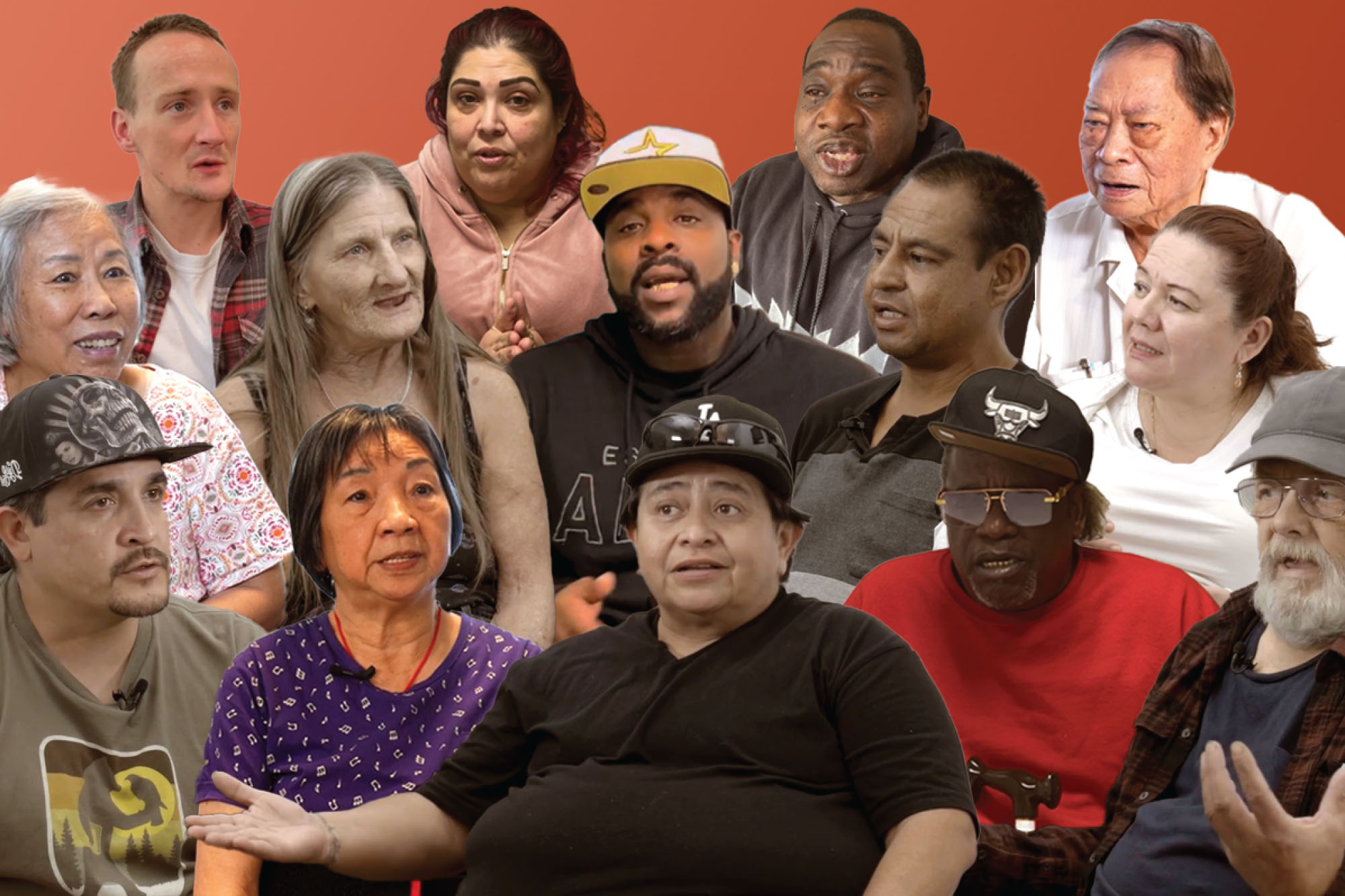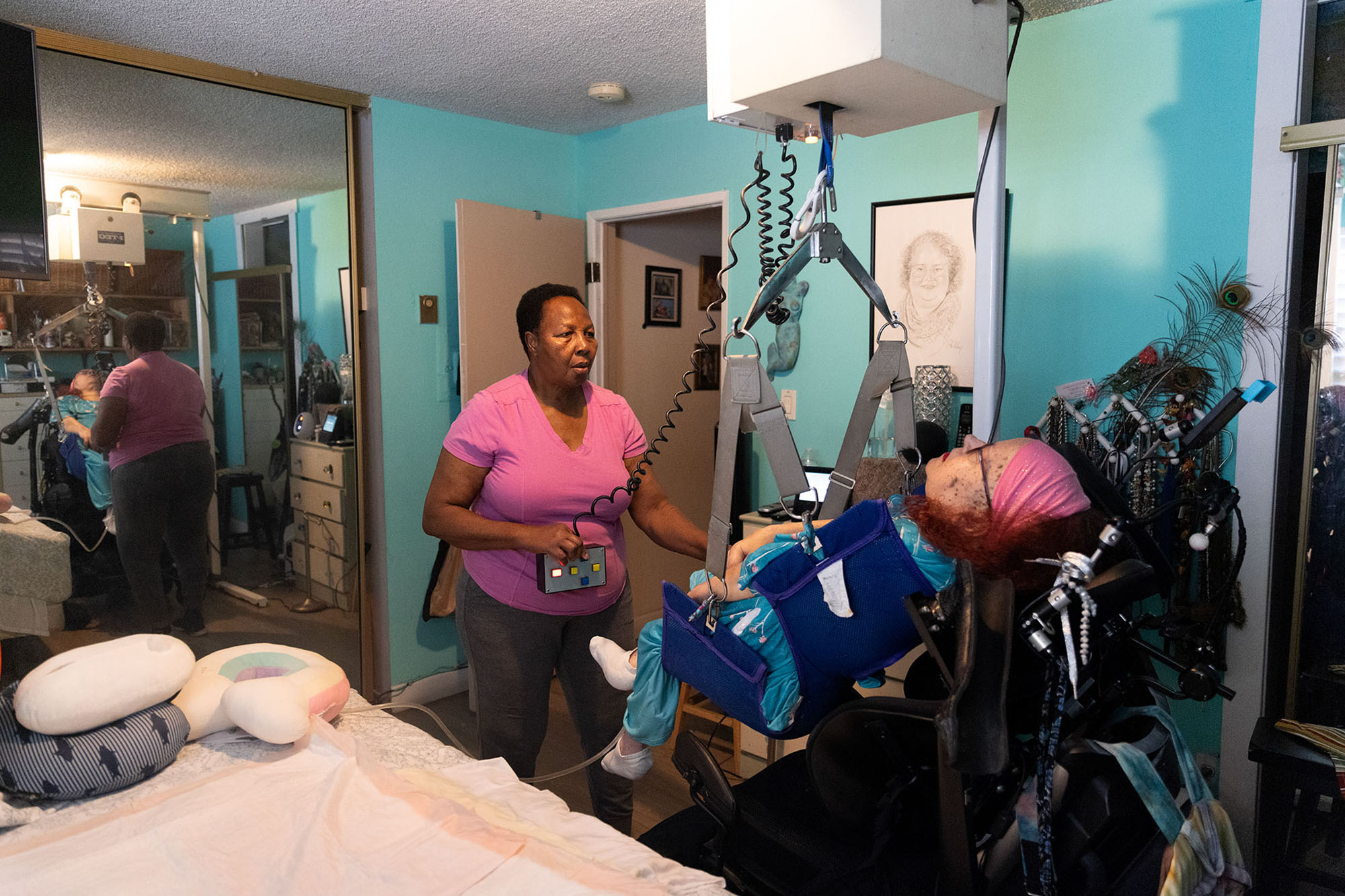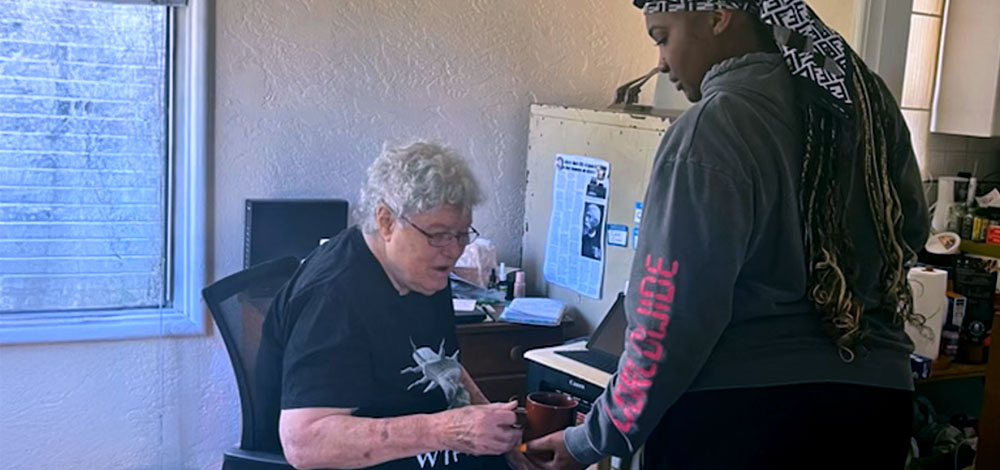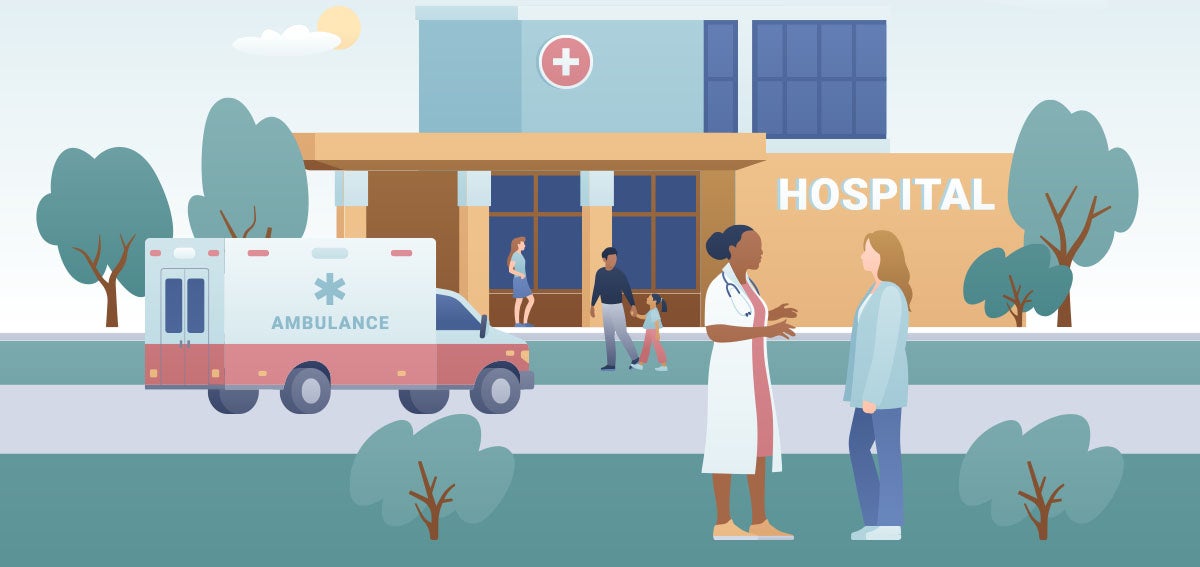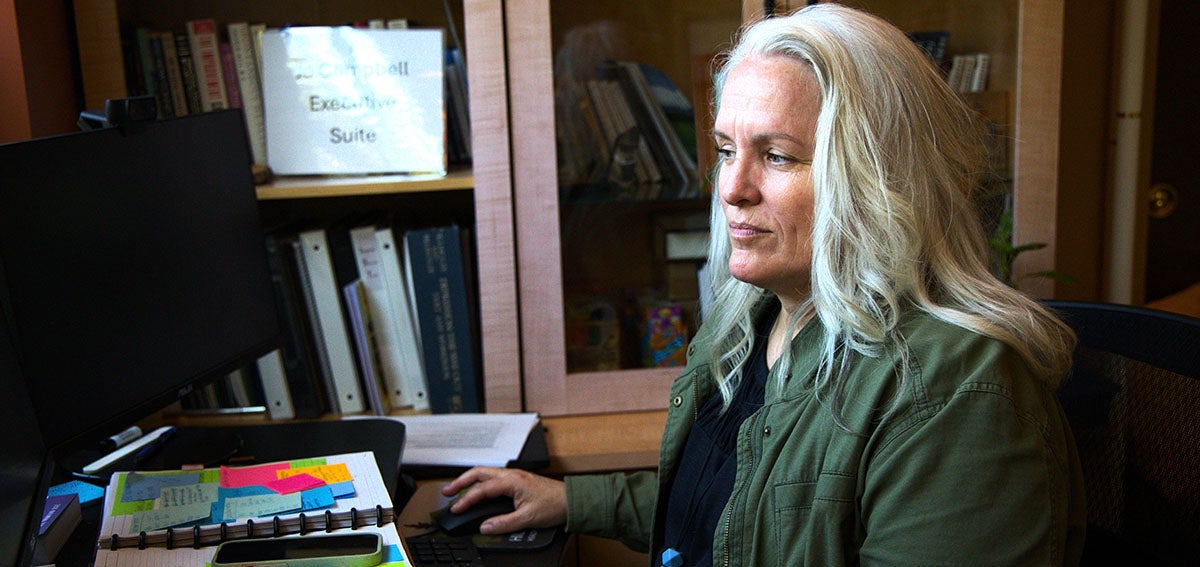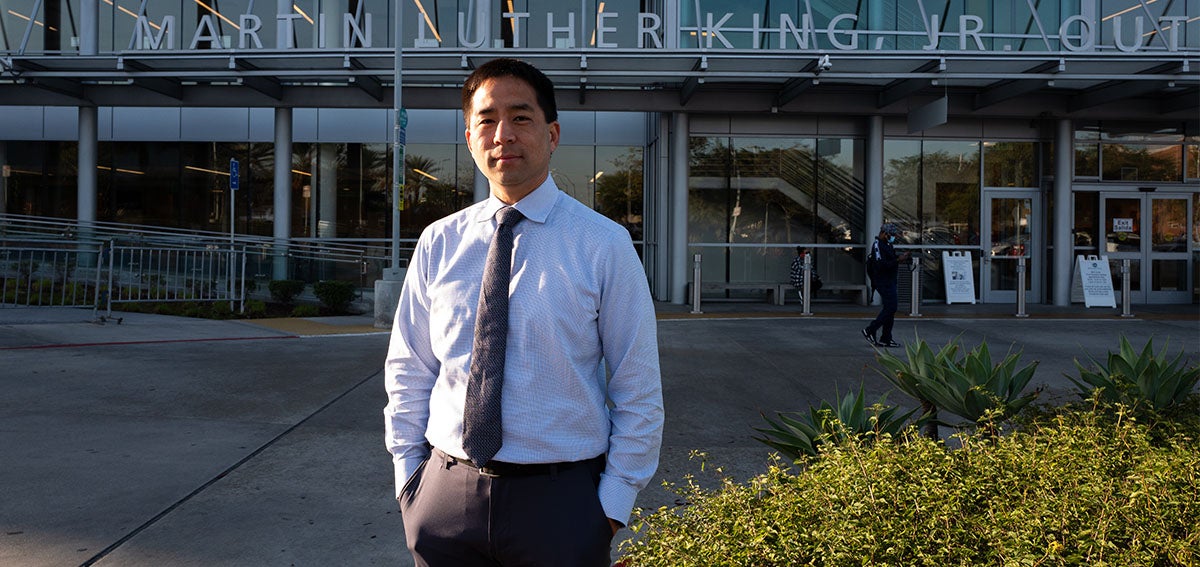

Los Angeles County has the nation’s largest population experiencing homelessness, and it has responded by launching numerous innovative programs that move people to housing and better health. A leader in these efforts is Clemens Hong, MD, MPH, director of community programs at the Los Angeles County Department of Health Services and an alumnus of the CHCF Leadership Program. He completed the program in 2021.
His job includes overseeing Housing for Health, a 10-year-old program that has moved 20,000 formerly unhoused people with complex health needs into housing. He also leads the department’s implementation of CalAIM (California Advancing and Innovating Medi-Cal), the initiative to strengthen the Medi-Cal program by incorporating targeted social services into the health care system to help people live healthier lives. CalAIM builds on Whole Person Care, a pilot program that also fell under his purview until it ended in 2021. Hong’s work demonstrating solutions to some of the most difficult health care problems puts him at the cutting edge of a national movement to couple health and social services in a quest for more person-centered care.
Recently, I talked with Hong in a video interview about his work and what LA County can offer to California. Our conversation has been edited for length and clarity.
Q: You’ve spent much of your career focused on improving care for people with some of the most complex health needs. Why do you choose to do this work?
A: It all comes from my family and my upbringing. I grew up in an immigrant family. My parents did not have a lot of wealth.
The central teachings were about privilege and sacrifice. It was critical for me to contribute to the family. I spent many hours working in my parents’ convenience store growing up — 70 hours a week in the summers. I learned from my parents about the importance of sacrifice for family and for others and the need to use my privilege to give back.
I was drawn to medicine by the idea that health delivery was about identifying the needs of the community and delivering resources to address them. I imagined I would become a medical director of a community clinic.
As it happens, many would say my job isn’t really medical, because I essentially oversee a large social service unit for the department. The Community Programs team goes to work every day delivering health to the sickest and most marginalized folks in Los Angeles County — people who have experienced systemic racism, structural violence, and generational and lifelong trauma.
Q: Housing for Health and Whole Person Care stitched together physical and behavioral health care with housing and social services for Medi-Cal enrollees with complex needs. How did those programs lay the groundwork for parts of the state’s transformational CalAIM program?
A: LA Whole Person Care interventions are visible in CalAIM programs. For example, there is recuperative care, which is short-term care and interim housing, enabling people experiencing homelessness to fully recover from a health problem after they have been released from a hospital or jail. We increased our recuperative care capacity by about 1,000 beds. This enabled us to do things like discharge people early or avert hospital admissions or emergency department visits.
Housing for Health
LA’s “Housing for Health” program has moved nearly 20,000 formerly unhoused people into a home over the last 10 years. Learn more about the initiative in this CHCF Blog post.
Another example is “pre-release” Medi-Cal enrollment for people being released from the county jail. Typically, they had to sign up for Medi-Cal on their own. We addressed the enrollment issue, so now we get them onto Medi-Cal upon release. Today, we’re hopeful that the [federal Centers for Medicare & Medicaid Services] will approve a limited pre-release benefit that covers care coordination, medications, and other services for the last 90 days before the end of incarceration. We know that people’s risk of death increases dramatically within two weeks of release. We often think about overdoses as a cause of death because of the high prevalence of addiction, but cardiovascular causes of death are number two, and cancers are in the top five. Ensuring people have a direct connection to health care upon release from jail or prison can help save lives.
For seniors and people with disabilities, we funded two programs under Whole Person Care. We provided enhanced payments for supports and services to keep people with higher needs in the community and out of nursing homes. The other was in-home caregivers. We had a lot of people who we couldn’t place into permanent supportive housing because the caregiver benefit didn’t start until they had an address. We funded interim in-home support with county funds so we could move people into housing immediately. Then that interim support would be turned off when state-funded support services kicked in. Both are now funded through CalAIM’s Community Supports.
Q: LA County is the nation’s second largest metropolitan area, so it has resources that smaller communities lack. What do you think it will take for all these innovations to be scalable statewide?
A: In LA County, we have built-in economies of scale and significant local funding that isn’t available everywhere. What we do here would need to be adapted to work in smaller communities. I believe that a lot of what we do on the ground is scalable, and it has scaled in the past.
Join the CHCF Health Care Leadership Program
This two-year, part-time program is for clinically trained health professionals in California, including behavioral health providers, nurses, dentists, and pharmacists, with at least five years of leadership experience. Led by national experts in workforce and leadership development at Healthforce Center at UCSF, the program addresses health care issues from the perspectives of business management and public policy. Applications are open April through June each year.
I recognize that not every region is going to have the type of local funding that we have. On the other hand, if they’re able to bring in funding, smaller communities might be even more successful, because they are unlikely to have the challenge that we have of coordinating our programs with thousands of service organizations that work with us.
Funding alone is not sufficient to create success. That requires an upfront investment in building capacity of community-based entities that deliver the full suite of services we know are needed to care for these populations.
Q: Why is cross-sector collaboration so important to the success of CalAIM, and what does it take to make it work?
A: Community-based organizations (CBOs) are a critical part of our delivery system. We have contracts with CBOs that deliver supportive services, including those related to housing, social, and justice issues. These are sophisticated organizations that can manage a contract with the government. Right now, the question is how do we help them contract directly with managed care plans under CalAIM initiatives?
While many CBOs have not been government contractors, some are the best equipped to engage the populations they serve. We’re missing an opportunity if we don’t partner with them and take advantage of their deep ties to people right there in that community.
We need to figure out ways to increase the number of CBOs that work with the county. How might we make investments and create a pipeline for organizations to do this work over the next three years?
Q: We’re one year into the CalAIM era. What’s your take on its potential?
A: I think it’s too early to tell.
Let’s start with recuperative care. So far, we have very few people who meet the new eligibility requirements under CalAIM, so we worry that people are missing out on care they need.
Remember also that some of the services under CalAIM are optional for health plans to offer. How do we convince health plans to invest in these needed services? And if they don’t invest, what does that mean for the sustainability of recuperative care? The need for the care is there, and we think the value is there. Now we need sustainable funding to make it work.
The second point is that we need better data sharing. Currently, we don’t have a source of truth on who the assigned Enhanced Care Management (ECM) and Community Supports providers are. Getting that information to our teams will improve efficiency and help us coordinate. If our Community Supports provider knew who the ECM provider was, we could call them up and say, “I’ve got this person in front of me. What are you guys working on? How can we help?” Those sorts of conversations are hard to have because there’s no data at the point of care.
Q: One of the programs you lead diverts people with mental health or substance use disorders from jail. Has that program been successful?
A: LA County has one of the nation’s largest mental health diversion programs. With a court order, we divert people with mental health or substance use issues by removing them from jail and providing them with housing and services in the community. Over five years, we have served 8,500 people through this program, and nearly 2,200 people are now housed in the community. This is a population that not only has an incredibly high burden of mental illness, but also physical illness. They frequently experience homelessness, and they are in and out of our justice system and our hospitals. We know incarceration has profound impacts on health, and this really is the same population that we’re talking about with CalAIM — people with complex needs.
We’ve engaged them during their incarceration, identifying people with serious mental illness who are a good fit for court-ordered release. We move them into housing with intensive case and wraparound behavioral health care management. This program has been incredibly successful: We’ve seen nearly a 120% increase in primary care engagement, 60% reductions in general acute hospitalizations, and 70% reduction in mental health admissions. And the impacts go beyond health: Our housing retention rate at one year is 74%. We have 86% with no felony convictions at 12 months.
When you get people housed, engage them, get them stabilized in the community, and provide wraparound supports, these are the types of outcomes that you can achieve. The outcomes are quite significant, and managed care plans should invest in this, as they are starting to do.
Clients talk about it as life-changing, and I agree.
Authors & Contributors

Dalma Diaz
Dalma Diaz is a health equity fellow at the California Health Care Foundation, where she works with the Advancing People-Centered Care team to improve care delivery and outcomes for Californians experiencing homelessness, particularly those with complex health needs who have not been well served by the status quo.
Prior to joining CHCF, Dalma was the strategic initiatives manager for the Home For Good initiative launched by United Way of Greater LA in 2010 to end homelessness in Los Angeles County. Most recently, her work at United Way focused on supporting cross-sector collaboration at the intersection of health and homelessness. She began her career focused on the education sector and later made homelessness her central interest. Dalma received a bachelor’s degree in political science from UCLA and a master’s degree in urban education policy from Brown University.

Zaydee Sanchez
Zaydee Sanchez is a Mexican-American visual storyteller, documentary photographer, and writer. Inspired by her upbringing in Tulare, in California’s agricultural San Joaquin Valley, her work is rooted in addressing the complexities of migration. With a focus on workers, gender, and displacement, she seeks to tell impactful, meaningful stories. Her work has been published in Al Jazeera, NPR, High Country News, palabra and more.
Her exhibition, “Tell Our Truth”, documented the stories of migrants seeking asylum during the Trump administration. The exhibition toured Los Angeles public libraries for a year, bringing discussions to various neighborhoods around the county. In 2019, the Commission on the Status of Women honored Zaydee as one of the Pioneer Women of the Year for her devotion to documenting and highlighting the Skid Row community in Los Angeles.

